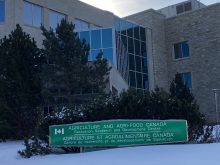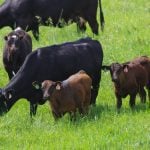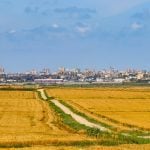You may find a young calf dead in the field or you may see one drop to the ground and kick at its belly.
Sudden death as well as signs of abdominal pain, also known as colic, can be caused by a wide range of diseases of the belly. It is not always easy to distinguish these conditions because the symptoms they cause in calves are often similar.
A calf younger than a week old exhibiting symptoms of belly pain and abdominal distension may have atresia coli. In this disease, a segment of the calf’s colon is missing and is not connected with the calf’s rectum. As a result, digested food that should travel through and be passed as manure backs up.
Read Also

Kochia has become a significant problem for Prairie farmers
As you travel through southern Saskatchewan and Alberta, particularly in areas challenged by dry growing conditions, the magnitude of the kochia problem is easy to see.
A calf with atresia coli will eat normally for a few days until the food builds up at the end of its colon. The calf’s abdomen becomes obviously distended and continues to expand each day. By the time a calf is two to four days old, it is depressed and has no appetite. Some calves show a high-stepping gait characteristic of belly pain. A calf with atresia coli does not pass manure, but a little meconium, or first feces, mucous or blood may be noticeable at its anus.
Atresia coli should be suspected in any young calf that does not pass feces and has a distended abdomen. The diagnosis can only be confirmed if the calf undergoes surgery to explore its abdomen and identify the abnormally formed colon.
It is possible to correct the anatomical defect by surgically connecting the normally formed pieces of the intestine. However, this surgery is rarely performed because of the cost involved.
Atresia coli does not appear to be an inherited condition. Current thinking suggests it may be triggered by uterine palpation early in pregnancy, before 42 days of gestation. This link is obviously more of a concern in dairy cows, in which early detection of pregnancy through palpation is routinely performed.
In some cases, a calf will have a developmental abnormality that involves only its anus, which is called atresia ani. This malformation creates a physical blockage that prevents defecation and is easier to diagnose and correct surgically than atresia coli. It can be detected by inserting a thermometer into the calf’s anus.
In slightly older calves, abdominal pain can be triggered by drinking too much milk, which the forestomach won’t be able to handle. Some of the milk ferments in the not-yet-functioning rumen. Bacteria proliferate in the poorly digested milk, releasing gas.
Gas accumulation can lead to torsion, or twisting, of a gut segment or displacement of a part of the gastrointestinal tract. The symptoms are the same as those seen in calves with bowel obstructions from hairballs or intussusceptions, when the intestine telescopes on itself. In all these cases, surgery is required to definitively diagnose the problem. Because only a few calves with these problems can be helped, the cost of surgery is rarely justified.
If a growthy calf suddenly dies, chances are it also had abdominal disease. It might have died from a perforated abomasal ulcer in the part of the forestomach that digests milk. If a stomach ulcer is deep, it can rupture, allowing stomach contents to enter the abdominal cavity. The result is fatal peritonitis. The cause of abomasal ulcers is not known for certain, but mineral deficiencies, clostridial bacterial infections and stress have all been implicated.
















